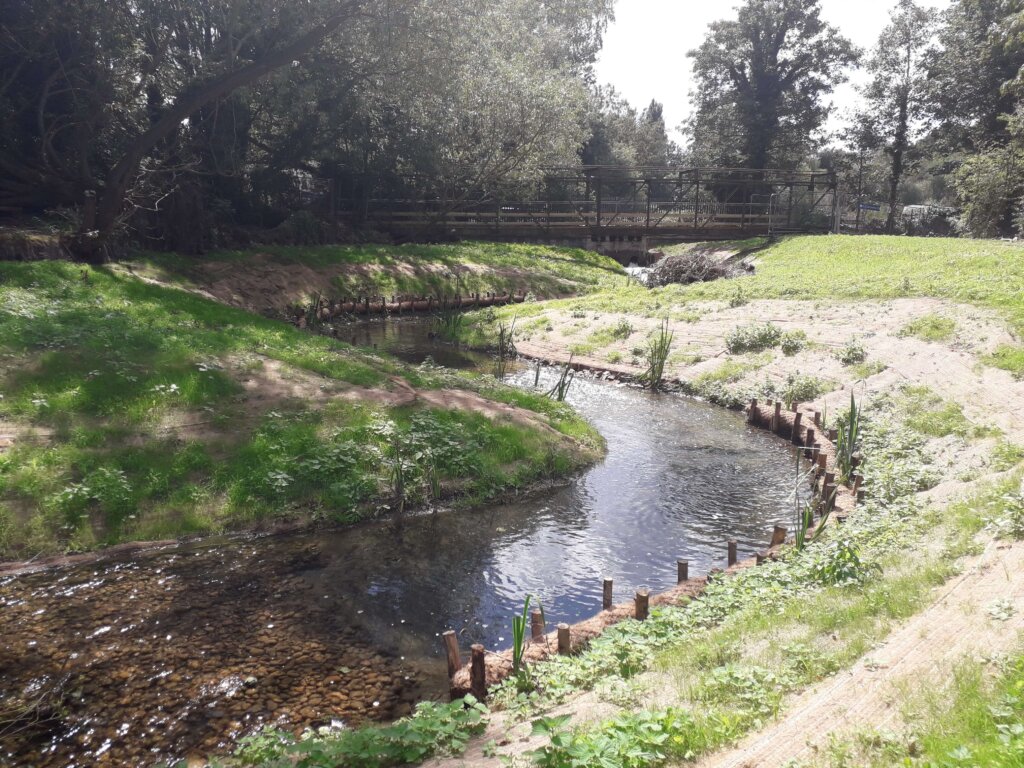The Aylesford River Restoration project focused on revitalising a 310-metre section of watercourse running through the site of the former Aylesford Newsprint facility in Kent. This stretch of the river, part of the Ditton Stream and classified as a main river, had become heavily modified and ecologically degraded over time due to industrial use and historical alterations. As part of the wider regeneration of the area into Panattoni Park Aylesford, the river restoration aimed to reduce flood risk, re-naturalise the watercourse, improve ecological health, and unlock planning and environmental benefits that would enable the site’s sustainable redevelopment.
Key project details include:
- Restoration of a 310-metre section of the Ditton Stream flowing through a former industrial site
- Removal of a redundant millpond and obsolete weirs to re-naturalise the river channel
- Installation of new flood defences to future-proof the site against climate-related risks
- Design of a functioning and dynamic river corridor to support biodiversity and fish passage
- Coordination with the Environment Agency and local planning authorities to secure new approvals
- Integration of community heritage features including information signage

Our role
BWB provided critical technical expertise and strategic support across environmental, hydraulic, and civil disciplines. At the heart of the project was the restoration of the Ditton Stream, a classified main river which flows through the redevelopment site.
The site was the former Aylesford Newsprint industrial works, and throughout redevelopment, our role focused specifically to the natural watercourse intersecting this landscape.
Hydraulic modelling
Our technical services included hydraulic flood modelling to assess the performance of the proposed flood defences and river realignment. This informed our civil engineering design of the restored channel, new embankments, and associated infrastructure. We also undertook geotechnical investigations to ensure structural integrity within the reprofiled landscape.
Successful planning amendments
A significant challenge emerged when it became clear that the existing planning permissions did not account for the removal of the millpond or weir structures. To address this, BWB worked in partnership with the Environment Agency to develop a new, restored channel that would re-establish a more natural morphology in place of the millpond. The design focused on re-naturalising the river channel to promote ecological health while maintaining flow capacity.
Designing for sustainability
Once the hydraulic and ecological strategies were agreed upon, BWB delivered detailed civil engineering designs for the new flood defences and the reshaped watercourse, along with geotechnical assessments to ensure the stability and longevity of the engineered structures.
Our design choices reflected a broader commitment to environmental stewardship, utilising sustainable construction practices where possible and ensuring that the restored river corridor would continue to deliver ecosystem services long into the future.
